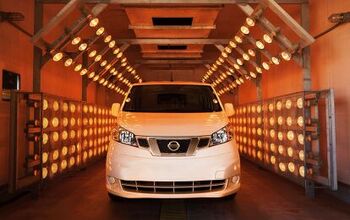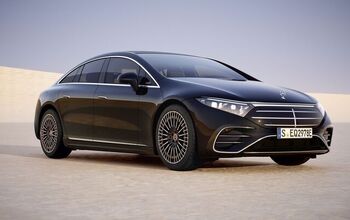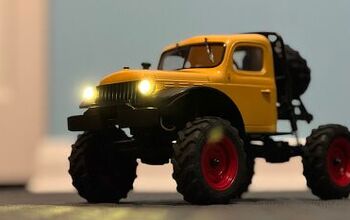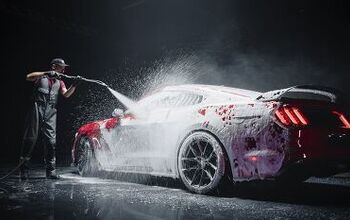2012 Nissan NV Review
Once upon a time, before 1983 in fact, vans in North America only came one way – full-size. These days, with fluctuating fuel prices and the push towards greener more thrifty alternatives, fleets have more options when it comes to purchasing delivery vehicles.
FAST FACTS
| 1. Nissan’s NV features a fully-boxed ladder frame to minimize torsional stress under high torque loadings. |
| 2. SV models get standard chrome grilles, mirror caps and padded rear cargo floor. |
| 3. Manual window cranks and locks are standard on the base S trim level. |
| 4. All NV vans will be built alongside Titan pickups at Nissan’s Canton, Mississippi plant. |
| 5. Front seats feature heavy-duty wear pads on the outer bolsters for greater durability. |
| 6. There are two 12v power outlets up front (dash and console), plus a 120v unit in the rear cargo area. |
| 7. A windowed livery bus version will also be available for 2012. |
That said; there’s still a lot to be said about a proper sized, body-on-frame, rear-wheel drive van. It’s also one of the remaining bastions of the automotive sector that’s essentially dominated by Ford and General Motors. Their respective E-series and Express/Savana haven’t been thoroughly revised in eons, the Ford since the 1991 model year (when it was still called the Econoline) and the Express/Savana since 1995.
With the Dodge Ram Van (an even older basic design having bitten the dust in 2003) the only competitor to the Ford and GM duo was the Mercedes designed and engineered Sprinter (sold here under various brands, Freightliner, Dodge and now Mercedes-Benz). However, the Sprinter barely counts for 1 percent of the commercial market – it’s just too foreign and too expensive to both to buy and fix, for many operators to consider as a worthy alternative.
AMERICAN FEATURES
Nissan, however, is hoping it can provide such a contender to the Ford and GM twins with this, the NV. Aptly standing for Nissan Van, this follows in much the traditional American van idom; sporting a sturdy ladder frame, correct wheel drive and a hearty V6 or V8 engine under the hood. And that’s the thing, it does have a ‘proper’ hood, not some tiny sloping mail slot that allows you to check the oil and not do much else.
Nissan says, this aspect alone, will be one feature likely to pique interest, the ability for fleet mechanics to actually work on the engine without pulling half the interior apart or dropping the motor out from underneath.
Also, because the engine is actually mounted under the hood, it also results in more leg space for the driver and front passenger, as well as keeping cabin temperatures down, a welcome boon for those making deliveries in the south and southwest during the warmer months.
As is standard Nissan truck practice these days, the passenger seat also folds flat, doubling up as sturdy worktable, perfect for your laptop or clipboard. In addition, a sliding lid on the optional center console, with provisions for attaching paper clips also provides the same function. Beneath the lid is a capacious storage bin, with space for letter-sized file folders, perfect for keeping documents at hand while on the go. There’s even a storage compartment below each seat on the outer side for additional items.
Other interesting features include a pair of rear doors that hinge open a whopping 243 degrees, via special release toggles on the hinges themselves. This means that if you have to back down a relatively narrow alley to load your cargo, you can open the doors first without worrying about one of them being damaged or torn off by that pesky staircase next to the loading dock.
Although the concept is popular in Europe (and the Sprinter features one), the NV is the first traditional North American style big van to offer both standard and high roof versions. The latter is available in 2500 (3/4 ton payload) and 3500 (1 ton payload) models and boasts and additional 21.1-inches of head room. There’s also no fewer than three sets of courtesy lights, to help illuminate the cargo area at night.
From the outset, the NV was designed with upfits in mind and Nissan has gone to great lengths to ensure pre-wiring provisions for tapping into the electrical system, while requiring no extra holes to be drilled for installing equipment such as shelves or racks. In fact, via Adrian Steel, the company also offers two no charge up fit packages, which should satisfy the needs of most trade folk. A fuel filler assembly that’s tucked out of sight and below the loading floor; along with flat top rear inner fender tops also help maximize interior utility space, which stands at 234.1 cubic feet on the regular roof model, a whopping 323.1 on the high roof version.
SUPPLE RIDE
Believe it or not, there are some of us who like the ride quality only a real body-on-frame vehicle can deliver and in that respect, the NV is far more pleasurable to drive on North American roads than the average Sprinter or small unibody vans like the Transit Connect. It soaks up most potholes and bumps rather nicely and compared to most full-size vans on the market, the seats offer better lateral sport, leaving you with less of a need to stretch your back after an hour or more of driving.
The fully-boxed chassis, we’re told is specific to this application, though some items, such as suspension bits are shared with the full-size Titan pickup. In order to withstand a pounding on rough city streets, heavy-duty components, including the control arms, spindles and rear springs are fitted as standard, even on the entry-level 1500 (1/2 ton) model.
One thing that impressed us about the NV was its turning radius for a full-size van. On a fairly narrow residential street we were able to do a complete 180 without having to back up, impressive considering this thing boasts a 146.1-inch wheelbase and measures more than 20 feet from stem to stern.
V6 OR POTENT V8 ENGINES AVAILABLE
Nissan offers two engines in the NV, both versions of those found in its trucks, the 4.0-liter VQ V6 with 261 horsepower and the 317 hp 5.6-liter single overhead cam V8 found in the Titan, Armada and Pathfinder SUVs. Both are teamed exclusively with a five-speed automatic transmission, though the V8 is only available on 2500 and 3500 rigs.
With the standard V6, our test high roof 2500 delivered adequate performance during city driving, though with a 800 lb pallet in back, found inclines and freeway on ramps a little overwhelming at times. Nevertheless, for the most part it’s relatively smooth (for a V6) and works well with the automatic.
The V8 by contrast is a bit of a hot rod. Without a load, it’s easy to peel the rear tires, (even on dry pavement), and acceleration is strong. Even the exhaust note is wonderful, yes… on a commercial van. It would be our choice and to be honest, even though Nissan hasn’t and isn’t likely to publish official fuel mileage figures for some time, there probably isn’t a huge amount of difference in fuel consumption between the two, especially as the V6 is working harder most of the time. In terms of towing capacity; Nissan says the V6 will handle up to 7,000 lbs with a dealer installed hitch; the V8 some 9,500 lbs with a factory installed unit.
Handling and braking aren’t probably top priorities for most fleet customers, but Nissan equips every NV with four-wheel disc brakes and anti-lock along with stability control (VDC). The brakes deliver more than ample stopping power and good feedback, feeling far less spongy than the Ford and GM setups.
You’re not going to win any road races with the NV, but overall handling is actually quite good, stable and predictable and the steering isn’t too overboosted, providing a decent feel at both slow and cruising speeds.
Nissan says it has gone to great lengths to ensure the NV is competitively priced and it undercuts the Freightliner Sprinter by close to $10,000 (even with comparable configurations). Entry prices (before options and taxes) start at $24,590 for a regular roof, 1500 S model, going all the way up to $32,190 for a 1 ton, V8 powered, high roof SV.
THE VERDICT
If there’s any criticism to be leveled at the NV it’s the fact that for now, options and equipment packages are rather limited compared with competition. In addition, it only comes in a single wheelbase configuration, which might limit its appeal to some buyers, though Nissan says a shorter or longer chassis model could be a possibility down the road.
Considering there’s been very little development in the full-size van market in the last two decades, Nissan has done an admirable job in providing fleets and contractors with an alternative to prehistoric domestic offerings and finicky, complex European models. Whether the NV will make a serious dent in GM and Ford’s dominance in the segment remains to be seen, but from where we’re standing, Nissan’s newcomer represents a darned good attempt at doing so.
RELATED READING
LOVE IT
- Acceleration (V8)
- Tight turning circle
- Good ride quality
LEAVE IT
- Options rather limited
- It’s long
- Could use a left side sliding door
More by Huw Evans





































Comments
Join the conversation